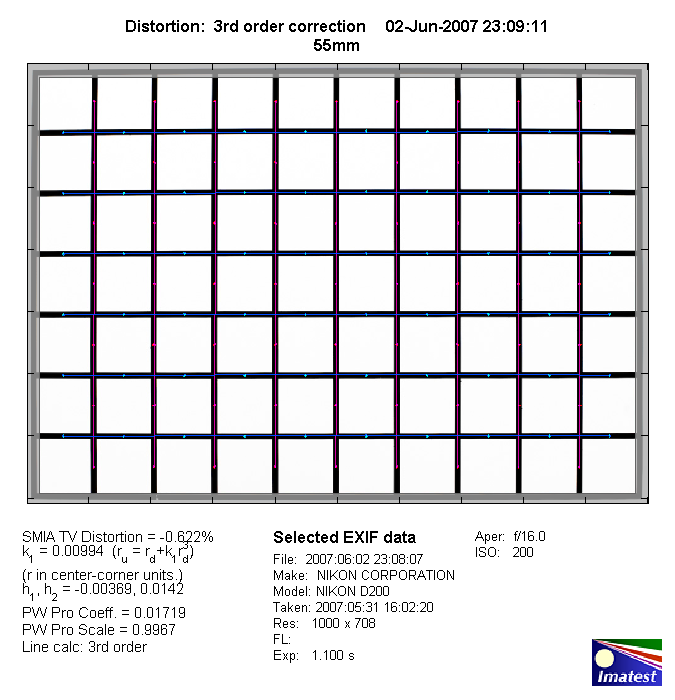|
Nikkor AF-S 55-200mm f/4-5.6G IF-ED DX VR - Review / Test Report - Analysis |
|
Lens Reviews -
Nikon / Nikkor (APS-C)
|
|
Page 2 of 3
Distortion
The AF-S 55-200mm VR produces a very slight degree of barrel distortion (~0.6%) at 55mm changing
to slight to moderate pincushion distortion at 135mm (~1.3%) and 200mm (~1%).
|
Move the mouse cursor over the focal length text marks below to observe the respective distortion
|
| 55mm |
135mm |
200mm |
|

|
The chart above has a real-world size of about 120x80cm.
Vignetting
As mentioned the AF-S 55-200mm VR is a reduced image circle lens so it produces
a comparatively higher degree of vignetting compared to classic full format lenses.
However, the Nikkor does actually a quite good job. At 55mm and 200mm there's only
a relatively moderate degree of vignetting (~0.77EV at wide-open aperture) whereas
it is more pronounced at 135mm (1EV @ f/4). If you close the aperture by one f-stop
the vignetting is already reduced to a negligible degree.

MTF (resolution)
It may be a bit surprising but the AF-S 55-200mm f/4-5.6G ED DX VR showed a very good
resolution characteristic. At 55mm the center resolution is exceptionally high straight
from f/4 followed by good border quality. Stopping down improves the border quality to
generally very good results. At 135mm the resolution is excellent and very even. Typical
for most tele zooms there's a drop in quality at the very long end of the range but
the resolution remains easily on very good levels. For a little kick in terms of contrast
you may prefer to stop down a little here.
The tested sample was very well centered (alignment of the lens elements).
Please note that the MTF results are not directly comparable across the different systems!
Below is a simplified summary of the formal findings. The chart shows line widths per picture height (LW/PH) which can be taken as a measure for sharpness.
If you want to know more about the MTF50 figures you may check out the corresponding Imatest Explanations
Chromatic Aberrations (CAs)
Lateral chromatic aberrations (color shadows at harsh contrast transitions) are relatively
well controlled and not overly field relevant.

|